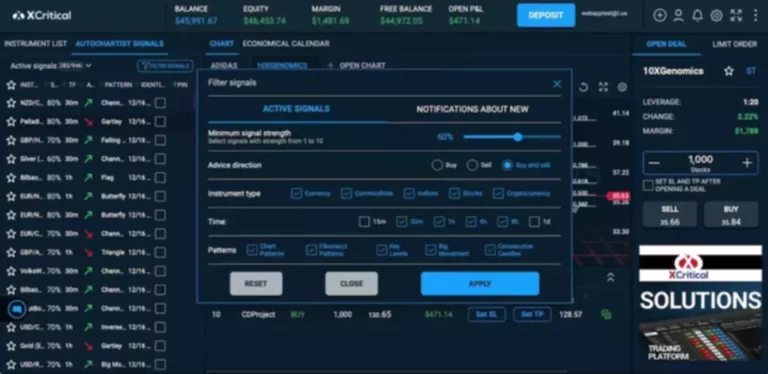Content
Cryptocurrencies like Bitcoin are often seen as hedges against inflation, while NFTs and tokenized real estate offer exposure to innovative markets such as digital art and blockchain-powered property ownership. This diversification allows investors to reduce risk while gaining exposure to emerging sectors. These types of digital assets are rapidly transforming industries by providing new ways to store, transfer, and invest in Proof of stake value, all while ensuring transparency and security through blockchain technology. The emergence of digital assets and decentralized finance (DeFi) represents a paradigm shift in the financial industry, offering unprecedented opportunities for innovation, diversification, and inclusion. Digital tokens represent ownership in real-world assets such as stocks, bonds, or real estate, traded on blockchain platforms.
Real-World Examples of Digital Assets

There’s no certain future for digital assets, so it’s up to you to decide if digital assets are a worthwhile risk for your portfolio. Before investing in digital assets, consider the risks or even speak with a financial advisor. Digital media represents a cornerstone of the digital asset ecosystem, transforming how we create, consume, and share content. From stunning digital images and immersive videos to captivating music and interactive ebooks, digital media has revolutionized artistic expression and information dissemination. Platforms like YouTube, trade digital asset Spotify, and digital publishing houses have democratized content creation, allowing creators to reach global audiences with unprecedented ease. Looking ahead, the future of digital assets is full of both chances and challenges.
What are Digital Assets: Types and Examples
So, although you can have separate wallets if you want, you can also store any crypto and NFTs you buy in the same place. This form of ledger technology is what’s behind cryptocurrencies and other tech trends. Digital assets are anything in digital forms, possessing value and having an owner. Items like digital images, photos, audio, and video files exist digitally and https://www.xcritical.com/ are regarded as assets since they have monetary and personal value. You can still create something digitally, but it is not a digital asset if it has no value.
The Future of Digital Assets: A New Paradigm of Value
Digital assets are digital representations of value that can be owned, stored, and exchanged electronically in digital format. They encompass a wide range of assets, including popular examples like Bitcoin, NFTs, tokenized securities, digital art, and more. While, Physical assets have a physical presence and can be seen, touched, and measured. Cryptocurrencies act as virtual currencies in which transactions are recorded on the blockchain. Blockchains are secured by cryptographic algorithms that require solving complex math problems.
Portfolio Diversification Opportunities
Tokenized assets democratize access to investments by lowering the barriers to entry. Tokenization allows real-world assets like real estate, commodities, or even art to be digitized and divided into smaller ownership shares through blockchain technology. Digital assets have revolutionized the way we store, transfer, and perceive value in the modern world. These assets, which can exist entirely digitally, range from traditional files like images and documents to more complex blockchain-based assets like cryptocurrencies and non-fungible tokens (NFTs). Just as there are many different types of digital assets, there are many ways to gain exposure to this unique class of investments. Investors with traditional, lower-risk portfolios can leverage digital assets as a satellite allocation.
Digital assets can reduce transaction costs and unlock new ways to store value. In many ways, digital assets are still a novel concept — but the underlying mechanisms that support their capabilities date back to the 1970s. Tokenized money is the digital equivalent of traditional fiat currency, such as stablecoins and Central Bank Digital Currencies (CBDCs).
- Shiba Inu emerged as a tongue-and-cheek “DOGE killer,” yet achieved significant market cap when speculators were able to turn it into a viral growth sensation.
- Digital assets are challenging that norm, democratizing access to previously inaccessible or illiquid investment opportunities.
- The value of a cryptocurrency is determined by the market participants who trade in the asset, also known as supply and demand.
- Ethereum is the leading smart contract platform, enabling decentralized apps (dApps) and DeFi protocols.
- Futures Financial contracts that obligate buyers and sellers to buy or sell an asset — often physical commodities or financial instruments — at a predetermined future date and price.
- Digital assets are semi-private, in that your wallet address is public, and anyone can see which assets a wallet owns at any given time.
- Some are open-source and community-led, while others are managed by central organizations.
This diverse set of real-world examples illustrates the potential utility of digital resources today and into the future. With more advancements being made each day, it is likely we will see an even wider array of opportunities when it comes to using various forms of digital representation across multiple industries in years ahead. Digital asset technology such as smart contracts has revolutionized the way digital assets, including NFTs, are created and exchanged. Smart contract self-executing agreements allow for secure creation, purchasing and selling of these digital goods in an efficient manner. Ethereum is typically used to mint the required smart contract with its code determining ownership rights over any given asset and governing transferability between parties. Digital assets are becoming increasingly important due to their ability to enable faster, more efficient, and more transparent financial transactions.
Transactions are then verified in groups called blocks and maintain a history of the ownership of the digital asset since inception. The public address allows you to receive digital assets, while the private keys give you access to your assets if you want to send to another address or sell them. Since the market for digital assets is relatively young, new cryptocurrencies and types of NFTs pop up frequently.
Anything that you store online and holds a certain value is a digital asset, i.e., documents, photos, videos, etc. From an investment perspective, assets based on blockchain are classified as digital assets. It is a one-stop destination for individuals and businesses in this space to create, store, manage, and distribute digital assets.
These revolutionary advancements make it possible to trade assets like NFTs. As we venture deeper into the era of Web 3.0, digital assets are poised to play a pivotal role in shaping the next generation of the internet. Web 3.0 envisions a decentralized, user-centric internet where digital assets and blockchain technology underpin new forms of interaction, ownership, and economic activity. Moreover, traditional financial institutions increasingly embrace digital assets, integrating them into their operations and offering new financial products. Banks, investment firms, and hedge funds are recognizing the potential of digital assets to enhance their offerings, drive innovation, and meet the evolving needs of their clients.
Payment tokens are designed for transactions and aim to function as digital cash. Examples include Litecoin and Dash, which focus on low transaction fees and faster confirmation times than bitcoin. However, as bitcoin dominance is now overwhelming, alternatives will struggle to compete with bitcoin’s network effects and liquidity for payment use cases. The Solana ecosystem has become a particularly active hub for new token creation, thanks to its low transaction costs and high processing speed.
Operating systems like Windows and macOS, alongside ubiquitous applications like Microsoft Office and Adobe Creative Cloud, are indispensable tools that drive productivity and innovation. Often licensed digitally, these software assets underscore the shift from physical to intangible resources in modern business operations. They make it easier to own a piece of something big with just a little money. This makes investing more accessible and builds trust among investors.
The proliferation of digital asset management is reshaping various aspects of society, from economics to culture. We help our clients navigate the complexities of buying, selling, and swapping cryptocurrencies, with a 24/7 personal broker service. Fair value accounting provides a more accurate valuation of crypto assets, and offers comopanies many more advantages which we cover in this post. Timing the market vs. time in the market, which is better when investing in cryptocurrency? Discover how crypto traders use this metric and how you can leverage statistics to make your own trading decisions. As the name implies, they are meant to hold a stable value, relative to another asset or financial instrument they are linked to, such as fiat currencies like the US Dollar, or commodities such as gold.
